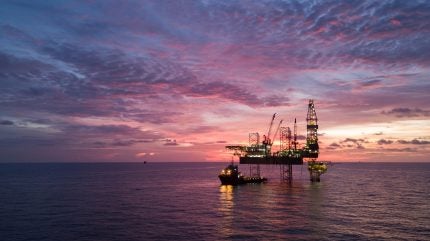
Equinor, alongside its partner DNO, has made an oil and gas discovery in the Norwegian North Sea’s northern region.
The exploration was conducted at wildcat well 35/10-13 S within production licence 827 SB, which was part of the awards in predefined areas (APA) in 2022.
The Deepsea Atlantic rig was utilised for the drilling process.
In a statement, the Norwegian Offshore Directorate said the primary drilling target was the Angel prospect, where preliminary estimates suggest recoverable oil equivalent volumes of 0.1–0.5 million standard cubic metres.
However, these volumes are currently deemed non-profitable under existing price assumptions.
The secondary objective was to delineate the 35/10-9 (Heisenberg) discovery, where oil was confirmed, solidifying the discovery size at 24–56 million barrels of recoverable oil.
How well do you really know your competitors?
Access the most comprehensive Company Profiles on the market, powered by GlobalData. Save hours of research. Gain competitive edge.

Thank you!
Your download email will arrive shortly
Not ready to buy yet? Download a free sample
We are confident about the unique quality of our Company Profiles. However, we want you to make the most beneficial decision for your business, so we offer a free sample that you can download by submitting the below form
By GlobalDataThe licence holders have previously drilled on the Gabriel prospect, which was unfruitful, and on Heisenberg, which led to a confirmed discovery.
An appraisal well on Heisenberg was also completed earlier this year.
The well encountered a 1m gas column in the Balder Formation, with sandstone layers totalling 56m exhibiting good-to-very good reservoir quality.
In the secondary exploration target, the well discovered gas in thin, heterogeneous sandstone layers measuring a total of 6m, which displayed poor-to-moderate reservoir quality, located within the Hordaland Group.
Furthermore, a 6m oil column was discovered in the Hordaland Group, corresponding to the interval for the Heisenberg discovery, with sandstone layers totalling 6m and moderate-to-good reservoir quality.
Although the well was not formation-tested, extensive data acquisition and sampling were conducted.
Drilled to a vertical depth of 1,813m below sea level and terminated in the Sele Formation in the Eocene/Palaeocene, the well was situated at a water depth of 365m.
The site has since been permanently plugged and abandoned.
Last week, Equinor and its partners announced an oil and gas discovery at the Gudrun field in the North Sea, made through wildcat wells 15/3-13 S and 15/3-13 A.
The licensees, led by Equinor with a 36% stake, include Vår Energi (25%), OMV (Norge) (24%) and Repsol Norge (15%), which will assess the results alongside the area’s other prospects.



